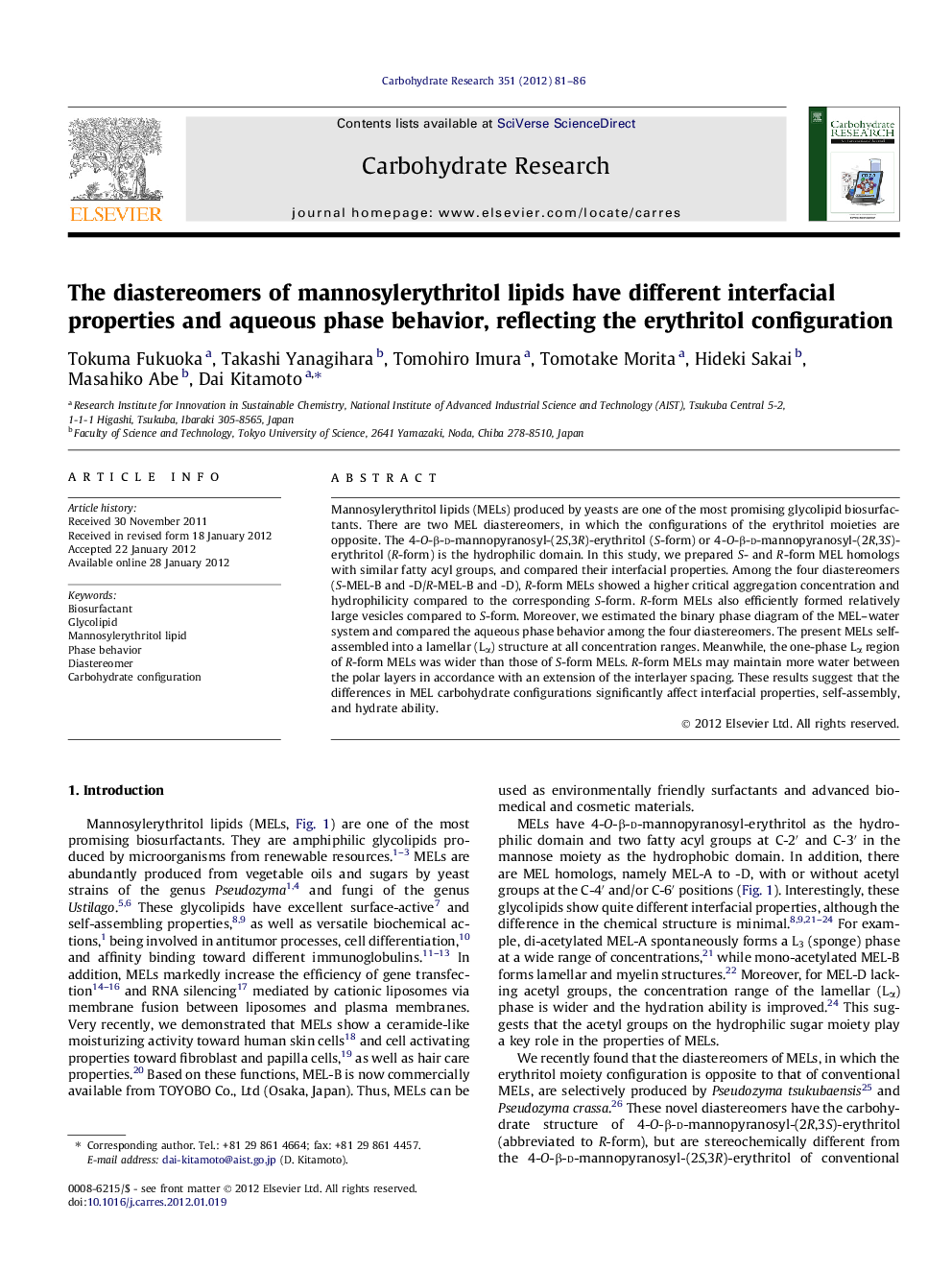| کد مقاله | کد نشریه | سال انتشار | مقاله انگلیسی | نسخه تمام متن |
|---|---|---|---|---|
| 1387828 | 1500900 | 2012 | 6 صفحه PDF | دانلود رایگان |

Mannosylerythritol lipids (MELs) produced by yeasts are one of the most promising glycolipid biosurfactants. There are two MEL diastereomers, in which the configurations of the erythritol moieties are opposite. The 4-O-β-d-mannopyranosyl-(2S,3R)-erythritol (S-form) or 4-O-β-d-mannopyranosyl-(2R,3S)-erythritol (R-form) is the hydrophilic domain. In this study, we prepared S- and R-form MEL homologs with similar fatty acyl groups, and compared their interfacial properties. Among the four diastereomers (S-MEL-B and -D/R-MEL-B and -D), R-form MELs showed a higher critical aggregation concentration and hydrophilicity compared to the corresponding S-form. R-form MELs also efficiently formed relatively large vesicles compared to S-form. Moreover, we estimated the binary phase diagram of the MEL–water system and compared the aqueous phase behavior among the four diastereomers. The present MELs self-assembled into a lamellar (Lα) structure at all concentration ranges. Meanwhile, the one-phase Lα region of R-form MELs was wider than those of S-form MELs. R-form MELs may maintain more water between the polar layers in accordance with an extension of the interlayer spacing. These results suggest that the differences in MEL carbohydrate configurations significantly affect interfacial properties, self-assembly, and hydrate ability.
Figure optionsDownload as PowerPoint slideHighlights
► Four MEL diastereomers (S-MEL-B and -D/R-MEL-B and -D) were prepared.
► These MELs self-assembled into a lamellar structure at all concentration ranges.
► MEL carbohydrate configurations significantly affect their functional properties.
Journal: Carbohydrate Research - Volume 351, 1 April 2012, Pages 81–86